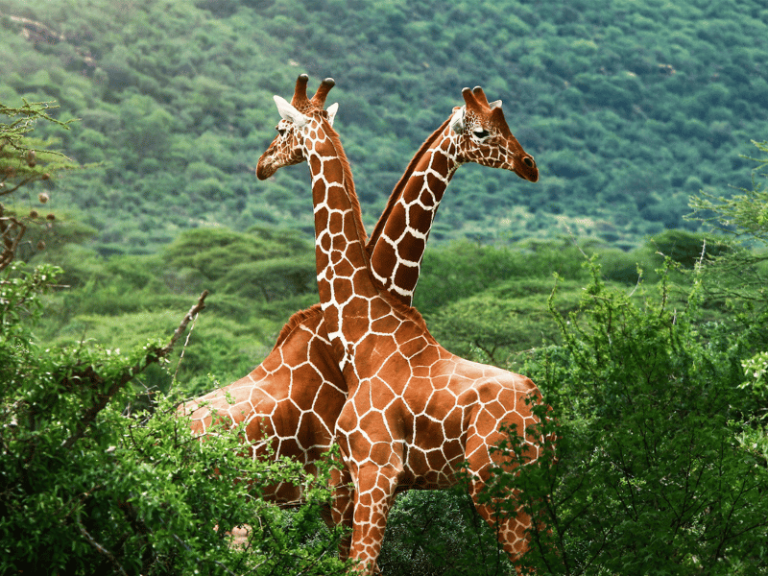The giraffe is truly the “tallest” in the animal kingdom. The tallest giraffe in the world stands at 5.75 meters, which is one-third taller than the tallest elephant.
Why does the giraffe have such a long neck? In the 18th century, the French biologist Lamarck, who specialized in the study of biological evolution, used the theories of “use and disuse” and “inheritance of acquired characteristics” to explain the formation of the giraffe’s long neck. He said that the ancestors of giraffes lived in environments where there was no grass for generations. To survive, giraffes had to constantly stretch their necks to eat leaves from trees. After many generations, their necks gradually grew longer, and eventually, they evolved into the giraffes we see today with their long necks.
The famous British evolutionary biologist Darwin also studied giraffes. He used the theory of “natural selection” to explain the formation of giraffes. He said that there were small variations among the ancestors of giraffes. These differences could lead to different outcomes under certain conditions. For example, some giraffes had longer necks, so during times of famine, they could still eat the tender leaves on trees, while giraffes with shorter necks could not reach the leaves and were gradually eliminated by natural conditions. The giraffes with longer necks could better adapt to their environment and continue to live and pass on their traits to future generations.
Therefore, the long neck of the giraffe is the result of long-term adaptation to its environment. Giraffes are very resilient to thirst and can often go several months without drinking any water. It’s not that their bodies do not need water, but because of their long necks and prehensile tongues, they can always reach tender leaves and buds that contain moisture. In zoos, giraffes can’t get tender leaves and buds, but keepers provide them with grass, greens, carrots, and other vegetables. Giraffes can obtain some water from these foods.
The ability of giraffes to go without drinking water for a long time is also an adaptation formed by their ancestors living in dry environments. Modern giraffes still retain this ancestral trait and can go for long periods without drinking water.

